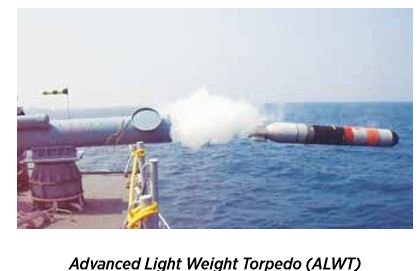SOURCE: IDRW.ORG.


India’s Defence Research and Development Organisation (DRDO) is set to elevate the capabilities of the Advanced Light-Weight Torpedo (ALWT) with a 100 kW Magnesium-Silver Chloride (Mg-AgCl) battery upgrade, intended to boost its speed from 33 knots to an impressive 47 knots—a significant 42% increase. This enhancement aims to meet evolving anti-submarine warfare (ASW) requirements for the Indian Navy, furthering India’s indigenous defense technology capabilities.
The ALWT is the second generation of the Shyena torpedo, developed by DRDO’s Naval Science and Technological Laboratory (NSTL), with production managed by Bharat Electronics Limited (BEL). Specifically designed for anti-submarine warfare, the ALWT has cleared all trials and has been proposed for production.
The current ALWT operates at a speed of 33 knots, which allows it to engage submarines effectively in various underwater conditions. However, DRDO’s planned battery enhancement—procuring a 100 kW Mg-AgCl battery—will raise the torpedo’s speed to 47 knots, marking a 42% increase in speed.
The increase in speed enables the ALWT to catch fast-moving submarines more effectively. Submarines capable of evading torpedoes rely heavily on speed and maneuverability; a 47-knot torpedo will minimize their escape window. Higher speed shortens the time needed for the torpedo to close in on a target, thereby reducing the likelihood of countermeasures by enemy submarines.
The increase in speed enhances the effective range over time, allowing the torpedo to cover more distance quickly, making it suitable for varied deployment scenarios in deeper and broader areas of the Indian Ocean Region.
The 100 kW Mg-AgCl battery is pivotal in achieving this upgrade, as its power density and reliability make it well-suited for underwater systems that demand both high speed and endurance. The Mg-AgCl battery offers high power output with an excellent energy-to-weight ratio, making it ideal for the ALWT’s size and operational requirements. This advanced battery chemistry ensures that the ALWT can sustain high-speed pursuits while maintaining performance integrity throughout the mission.
NOTE : Article cannot be reproduced without written permission of idrw.org in any form even for YouTube Videos to avoid Copy right strikes. Websites doing illegal reproductions will get DMCA and Legal Notices.